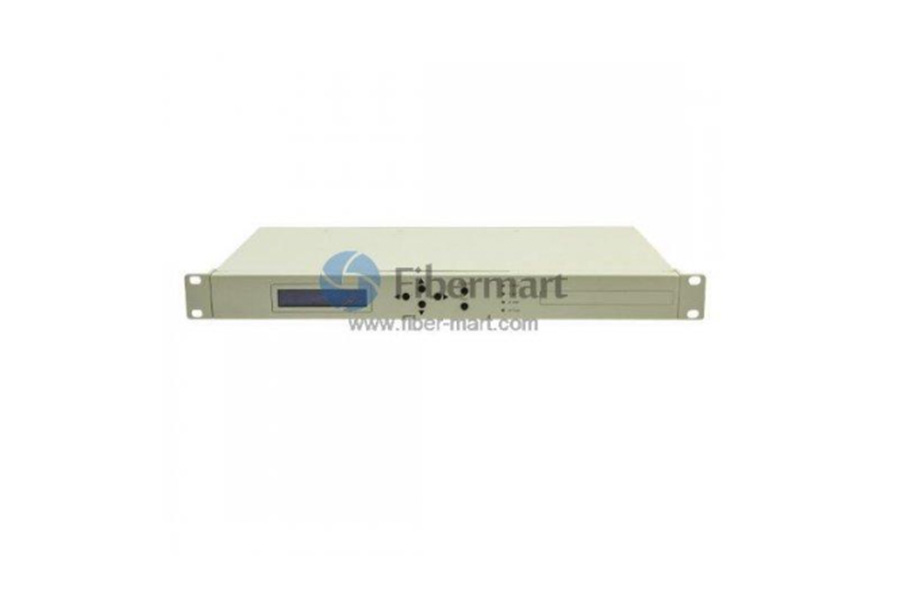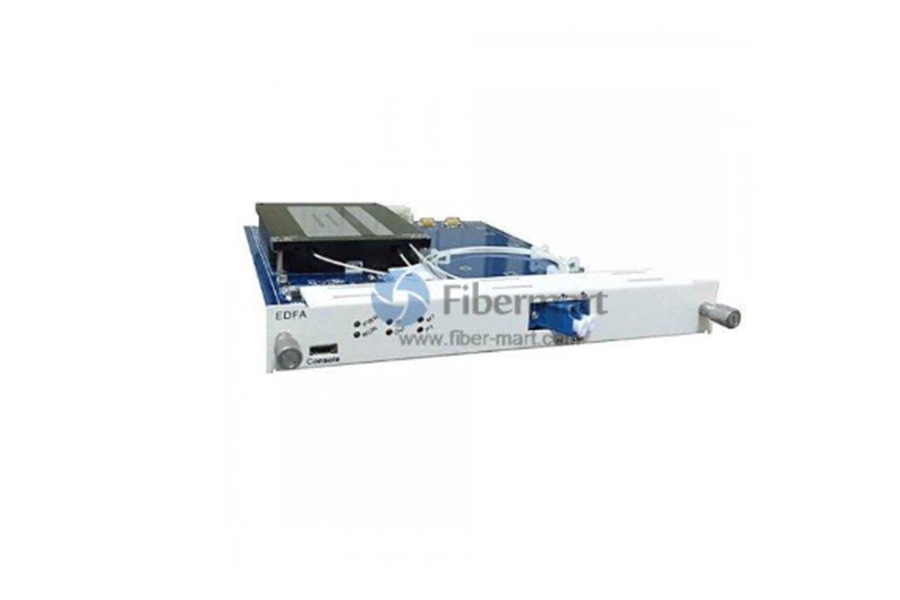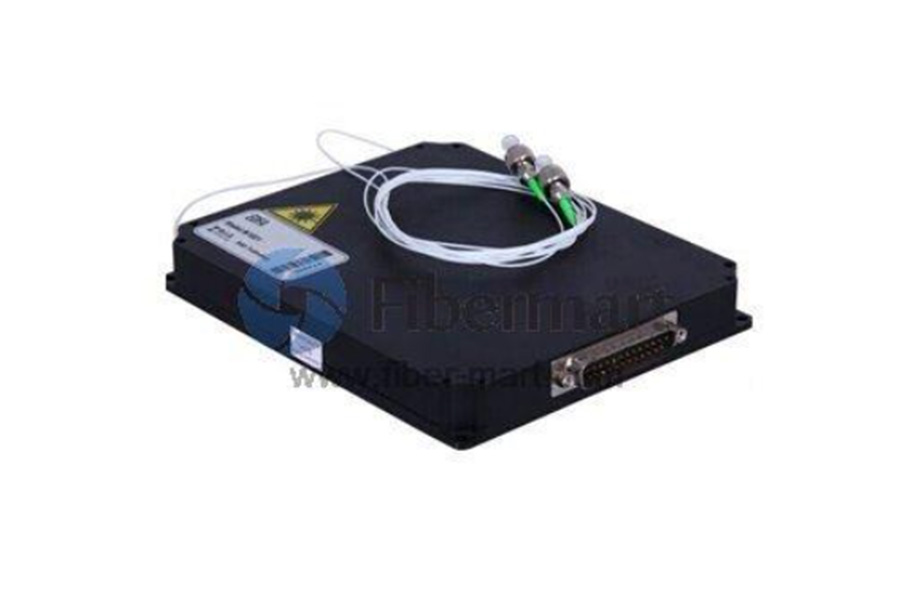In the fast-paced world of digital communication, where milliseconds matter and data demands are skyrocketing, ensuring robust and efficient long-distance connectivity is paramount. Enter the Erbium-Doped Fiber Amplifier (EDFA)—a game-changing technology that’s revolutionizing how we transmit data across vast distances without compromising on speed or quality.
The Magic Behind EDFA: Amplifying Without Conversion
Traditional signal amplification methods involved converting optical signals into electrical ones, amplifying them, and then converting them back to optical form. This process, while effective, introduced latency, increased complexity, and consumed more power.
EDFA sidesteps this by directly amplifying optical signals. Here’s how it works:
1. Doping:
A segment of optical fiber is infused with erbium ions.
2. Pumping:
This doped fiber is then energized using a laser (typically at 980 nm or 1480 nm wavelengths).
3. Amplification:
When the weak optical signal passes through this energized fiber, the erbium ions boost the signal’s strength through stimulated emission.
This method ensures that the signal remains in the optical domain throughout, eliminating the need for optical-to-electrical conversions and thus reducing latency and potential points of failure.

Reducing Noise: The Battle Against Signal Degradation
One of the challenges in long-distance fiber optic communication is maintaining signal integrity. Over extended distances, signals can degrade, leading to data loss or the need for retransmission.
EDFA addresses this by offering:
Low Noise Figure:
Typically ranging between 3 to 6 dB, EDFAs introduce minimal noise, ensuring that the amplified signal retains its quality.
High Gain:
With gains up to 40 dB, even weak signals can be amplified effectively without significant distortion.
By maintaining a high signal-to-noise ratio, EDFAs ensure that data transmitted over long distances remains clear and accurate.
Extending Reach: Empowering Telecom and Subsea Networks
The ability of EDFAs to amplify signals without conversion and with minimal noise makes them invaluable in various applications:
1. Telecommunications
In terrestrial networks, especially those spanning vast regions, EDFAs are deployed at intervals to boost signal strength. This ensures:
- Extended Reach: Signals can travel longer distances without degradation.
- Cost Efficiency: Reduces the need for frequent signal regeneration stations.
- Flexibility: Supports various data rates and formats without requiring equipment changes.
2. Subsea Communications
Undersea cables, like the Fibre-optic Link Around the Globe (FLAG), rely heavily on EDFAs. These cables span thousands of kilometers beneath oceans, connecting continents. EDFAs in these systems:
- Enhance Capacity: By supporting Dense Wavelength Division Multiplexing (DWDM), multiple data channels can be transmitted simultaneously.
- Ensure Reliability: With fewer active components than traditional repeaters, EDFAs reduce potential points of failure.
- Facilitate Maintenance: Their passive nature means less frequent interventions, crucial for undersea infrastructures.
The Role of EDFA in Modern Network Architectures
Today’s network infrastructure is a far cry from the early days of copper wire and analog signals. We’re living in the era of cloud computing, 5G, IoT, hyperscale data centers, and global content delivery—and these advancements are pushing fiber optic networks harder than ever before. That’s where EDFA tech steps up and flexes its muscle.

Handling the Load: EDFA in High-Capacity Systems
Modern data consumption isn’t just about bandwidth—it’s about consistently delivering high-speed connectivity across vast, diverse terrains. Think about hyperscale data centers exchanging petabytes of data, or content streaming platforms supporting millions of simultaneous 4K (or even 8K) streams. To keep these high-capacity systems humming, network architects lean on Dense Wavelength Division Multiplexing (DWDM) systems.
DWDM works by stacking multiple light wavelengths onto a single fiber, kind of like carpooling different data streams down one highway. But these signals weaken over distance, especially in long-haul or metro network deployments. That’s where EDFAs come in. They amplify all those wavelengths at once without needing to break them apart or convert them to electrical signals. This wavelength-agnostic amplification makes EDFAs an indispensable component of any DWDM setup.
It’s not just about capacity, though. EDFA modules can be tailored with gain flattening filters to ensure all wavelengths get amplified evenly. Without these, some channels might get boosted more than others, causing imbalance and signal integrity issues. And no one wants a few screaming signals drowning out the rest.

Versatility Across Network Layers
Another reason why EDFAs are rockstars in modern network architecture is their versatility. Whether you’re dealing with core backbone networks, metro aggregation, or even certain edge applications, EDFAs adapt without requiring a major hardware overhaul. That means you can future-proof your infrastructure without constantly replacing components.
In core networks, where data travels hundreds or even thousands of kilometers, EDFAs ensure that signals stay strong between regeneration points (which can be expensive and power-hungry). In metro networks, where the span between nodes is shorter but the data density is high, EDFAs still provide essential support, particularly in networks utilizing optical switches or PLC splitters that can cause signal attenuation.
EDFA in Passive Optical Networks (PONs)
With the global roll-out of FTTx (Fiber to the x), Passive Optical Networks are expanding like wildfire. Here, too, EDFAs have carved out a niche. In large-scale deployments, like fiber-to-the-home (FTTH) for an entire city, the signal needs to be split multiple times using fiber splitters, which causes significant attenuation.
By inserting an EDFA before or after the splitter (depending on the network design), service providers can keep those signals alive and kicking. And thanks to their low noise figure, EDFAs don’t mess up the quality even as they boost power.
This makes them especially useful in rural or underserved areas, where the distance between central offices and users might be much greater than in densely populated urban zones.
Playing Nice with Other Technologies
Modern optical networks are full of diverse components: optical switches, MTP trunk cables, QSFP56 cables, and various types of pigtail fibers. One of EDFA’s unsung superpowers is how well it plays with others.
Let’s say you’re operating a setup with 1×2 optical switches to handle failover or rerouting. Or maybe you’re using polarization maintaining fiber cable in a quantum key distribution network (yep, that’s a real thing now). EDFAs don’t need any special alignment to work in these systems. They just boost the signal and move on. Minimal fuss, maximum impact.
Even in environments dealing with coherent optical systems (which use phase and amplitude modulation for high-speed data), EDFAs remain compatible. They simply work—whether you’re sending data across continents or just to the next data hall.
Energy Efficiency and Space Savings
In an age where green energy, sustainability, and ESG goals matter as much as performance, EDFAs are helping organizations check both boxes. Because they amplify in the optical domain, they consume less power than traditional optoelectronic regenerators. Plus, their form factors have become increasingly compact.
Whether you’re fitting them into a 1U rack mount, using a modular shelf in a data center, or deploying them in a sealed, hardened enclosure in the field, today’s EDFAs are built to save space and reduce energy footprints. They’re efficient, reliable, and quietly doing all the heavy lifting behind the scenes.
Software Integration and Remote Management
Modern EDFAs often come with digital control interfaces and can be managed remotely via SNMP or proprietary software. That means network operators can:
- Monitor signal gain and noise levels in real time
- Adjust the pump laser power
- Track performance metrics
- Troubleshoot issues without dispatching a technician
This kind of software-defined control is crucial in software-defined networking (SDN) environments and automated provisioning systems that power modern telecom and hyperscale networks.
Looking Ahead: The Future of EDFA Technology
Research continues to push the boundaries of what EDFAs can achieve. Innovations include:
- Hybrid Amplifiers: Combining EDFAs with Raman amplifiers to extend reach and capacity.
- Integration with Photonic Circuits: Embedding EDFAs into integrated photonic chips for compact and efficient designs.
- Advanced Materials: Exploring new doping materials to expand operational wavelengths and improve performance.
As the digital landscape continues to evolve, the importance of reliable, high-capacity, and efficient data transmission cannot be overstated. EDFAs, with their unique advantages, are set to remain at the forefront of this revolution.
Elevate Your Network with Fibermart’s Cutting-Edge Solutions
Looking to harness the power of EDFA and other advanced fiber optic technologies? Fibermart (Fiber-MART.COM) is your go-to global supplier and manufacturer, offering top-tier optical amplifiers, fiber patch cables, LC pigtails, and more. With a commitment to quality and innovation, Fibermart ensures your network is equipped for the demands of tomorrow. Explore their extensive range of optical network solutions and experience unparalleled performance and reliability.


